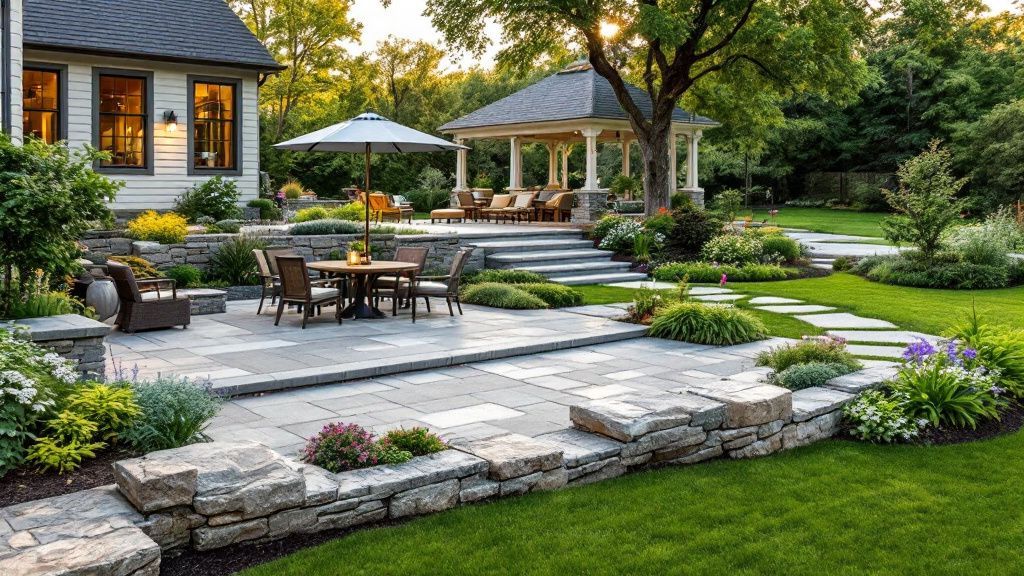
Transform Your Outdoor Space with Hardscaping
Imagine stepping into an outdoor haven that seamlessly combines beauty and functionality. Hardscaping transforms mundane spaces into extraordinary settings by incorporating elements like retaining walls and paving stones. These structures add both aesthetic appeal and practical benefits such as erosion control and stable walking surfaces. With expert hardscaping contractors, you can creatively explore designs that complement natural landscapes, offering personalized hardscaping services that cater to your specific needs. The process involves meticulous planning and execution, ensuring that your dream space can withstand the test of time. Making use of skilled professionals ensures a high-quality hardscaping installation, providing you with a stunning outdoor area that enhances your lifestyle.

Understanding the Basics of Hardscaping
Hardscaping introduces essential elements to any outdoor environment, focusing on non-living components like stone, brick, or concrete. This practice involves crafting areas using structures such as patios, walkways, and retaining walls. It aims to create a balanced relationship between architecture and nature, enhancing both utility and beauty in outdoor spaces. The core of hardscaping lies in transforming your surroundings with strategic, durable installations.
Materials like paving stones serve practical and aesthetic functions, guiding foot traffic and defining space. Carefully selected materials contribute significantly to your landscape’s overall hardscaping design and theme. You might choose materials that complement your home’s style for a cohesive look. For instance, integrating locally sourced stones can harmonize with the surrounding environment, emphasizing a natural flow.
Seeking the expertise of hardscaping contractors ensures that your project aligns with specific goals and local conditions. These professionals offer hardscaping services that range from design consultation to full-scale installation. They assess soil stability, drainage needs, and environmental impacts to ensure that your project not only looks good but also functions smoothly in the long term.
For example, in arid regions, a hardscaping installation may focus on drought-resistant materials and designs to conserve water. Retaining walls might be employed to manage soil and water flow efficiently, enhancing landscape sustainability. Such thoughtful planning and execution protect landscapes from erosion while adding layered visual interest to your space.
At its core, hardscaping goes beyond mere decoration. It provides a structured foundation for outdoor living, creating spaces you’ll enjoy for years to come. When thoughtfully integrated with natural landscaping, hardscaping offers a lasting addition to any property, enriching your environmental experience.
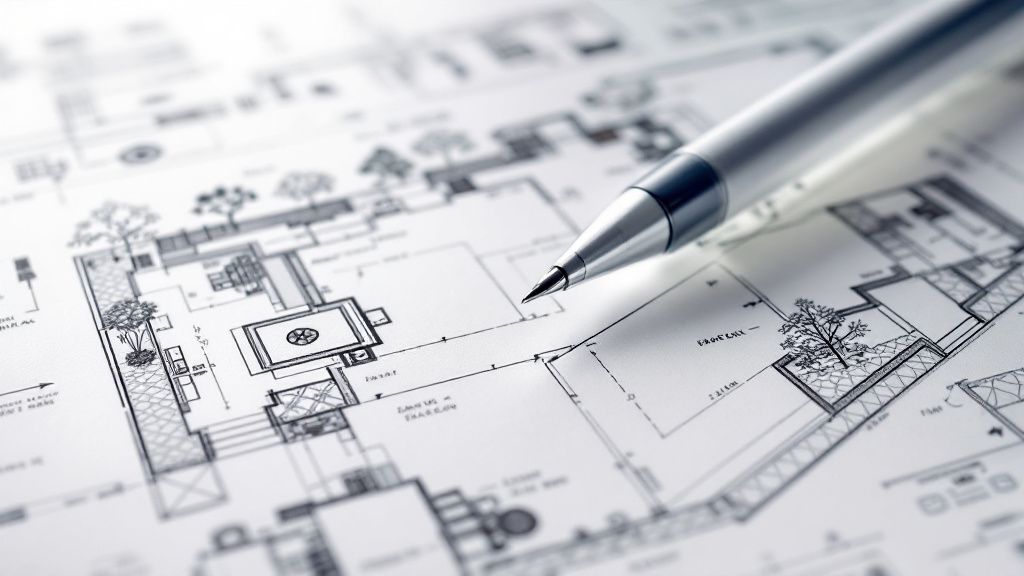
Planning Your Hardscape Design
Creating a hardscape design begins with assessing your outdoor space and determining its potential. Consider the function and aesthetic you wish to achieve. Whether it’s a serene garden path using paving stones or a dramatic retaining wall for varied topography, your hardscape should align with your lifestyle and environmental conditions. Understanding the specific needs of your area will help guide your design decisions and material choices.
To capitalize on your hardscape design, visualize your space with scaled drawings or utilize digital planning tools. These methods allow you to experiment with various configurations before starting the physical labor. This foresight ensures a cohesive layout and helps identify potential challenges. By mapping out your design, you can better communicate your vision to hardscaping contractors, aiding a smoother implementation process.
In the planning phase, consider the environmental impact and sustainability of your design. For example, incorporating permeable paving stones can manage rainwater runoff more effectively. You might also consider recycled materials or low-maintenance options for a more eco-friendly approach. Such strategic planning not only enhances your outdoor space aesthetically but also promotes ecological responsibility, which can be both fulfilling and beneficial in the long run.
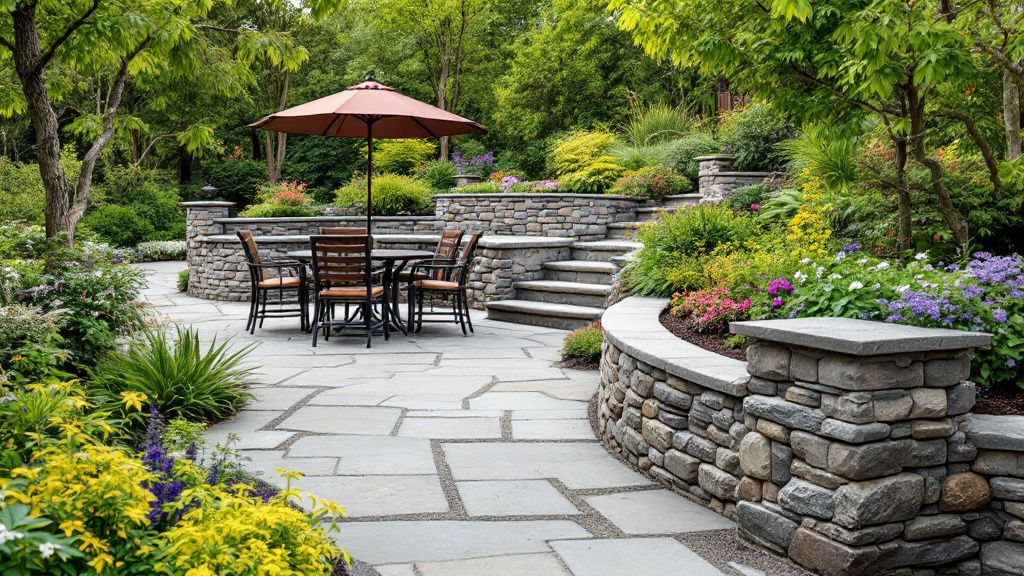
Frequently Used Hardscaping Features
Commonly used hardscaping features include patios, walkways, and retaining walls, each serving distinct purposes. Patios provide an ideal space for outdoor gatherings, offering a solid, stable surface made from paving stones. Walkways guide movement through your landscape, creating a path that encourages exploration. Retaining walls not only add architectural interest but also help control erosion, a practical addition for sites with uneven terrain.
While many believe that elaborate water features are essential for creating an impressive outdoor space, there’s a strong case for simpler elements. Using well-placed lighting or diverse textures, such as mixing stone and wood, can significantly enhance your landscape’s allure without the complexity and maintenance of water features. These alternatives can provide equal aesthetic value while being easier to maintain.
Engaging hardscaping contractors can elevate your design with professional insights. These experts offer hardscaping services that can integrate these elements seamlessly into your landscape. They consider the interplay of features like seating walls and fire pits, blending functionality with design. This holistic approach ensures your space is not only visually appealing but also practical and enduring.
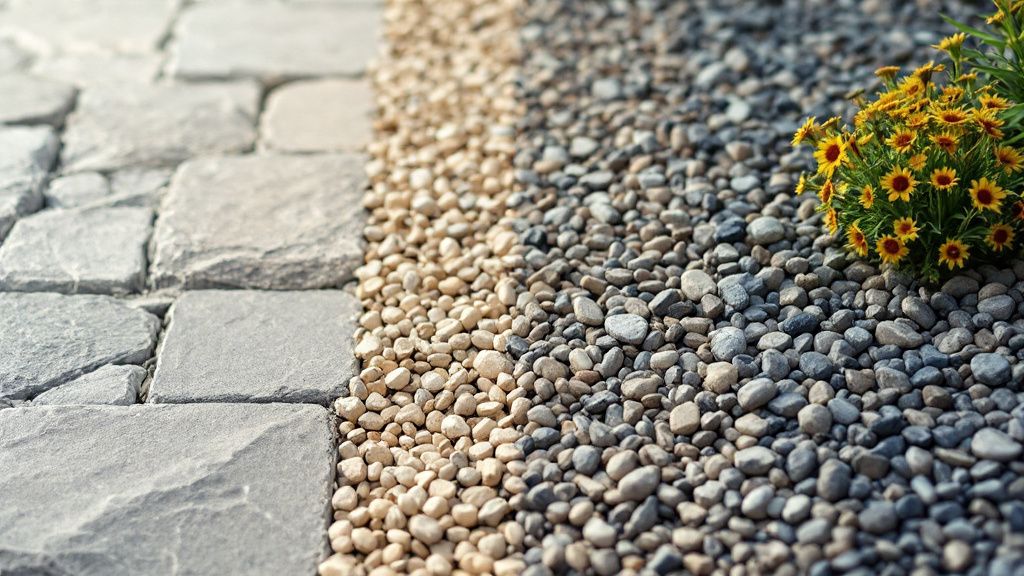
Choosing the Right Hardscaping Materials
Selecting the right hardscaping materials is a critical step in building a durable and attractive outdoor space. Consider factors such as durability, climate compatibility, and design aesthetics. Materials like paving stones offer a versatile and robust solution for enhancing pathways and patios. Natural stone, brick, and concrete are popular choices for their longevity and ability to blend with various architectural styles. These materials form the backbone of any hardscape design.
The current state of hardscaping materials shows a growing trend towards eco-friendly options and sustainable practices. Many homeowners are opting for permeable paving to improve drainage and reduce environmental impact. Recycled materials are also in demand, offering a perfect balance of practicality and environmental consciousness. This shift highlights a broader movement towards sustainability in landscaping, reflecting a preference for greener solutions.
Collaborating with hardscaping contractors ensures you choose materials that fit your specific needs. These professionals provide essential hardscaping services, guiding you in selecting the best materials for function and style. They also incorporate innovative trends into your hardscaping installation, securing a contemporary look that emphasizes both aesthetic value and environmental responsibility. With expert guidance, your material selection can become a seamless part of your outdoor vision.
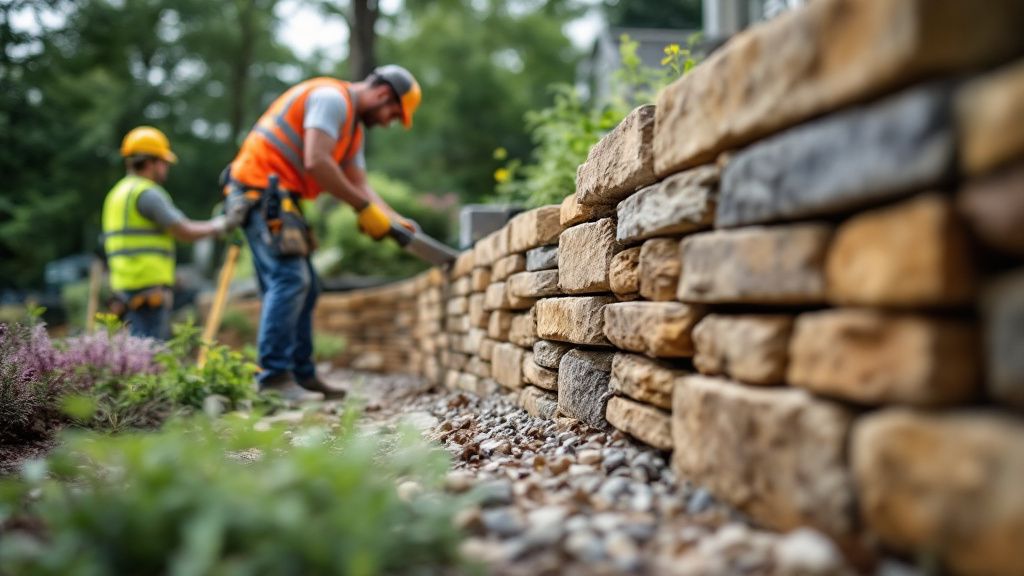
Installing Hardscape Elements
Installing hardscape elements requires careful planning and execution to achieve a cohesive outdoor environment. This process involves preparing the site, choosing suitable materials, and ensuring stability. For instance, laying paving stones involves not just artistic arrangement but also securing a strong foundation. Retaining walls need precise measurement and support to manage soil effectively, integrating seamlessly into your landscape. Each component, from selection to placement, is crucial for a successful hardscape installation.
Tracing its evolution from ancient civilizations, hardscaping has been instrumental in defining and utilizing outdoor spaces. The use of stone and brick in areas like the Roman Empire showcases early examples of creating functional, attractive environments with enduring materials. Today, modern hardscaping design draws on these traditions, combining time-honored techniques with contemporary innovations. Employing skilled hardscaping contractors can bridge historical methods and modern needs, making sure your project reflects both durability and beauty. Their expertise in hardscaping services helps navigate complexities, ensuring every stone and brick aligns with your vision and historical integrity.
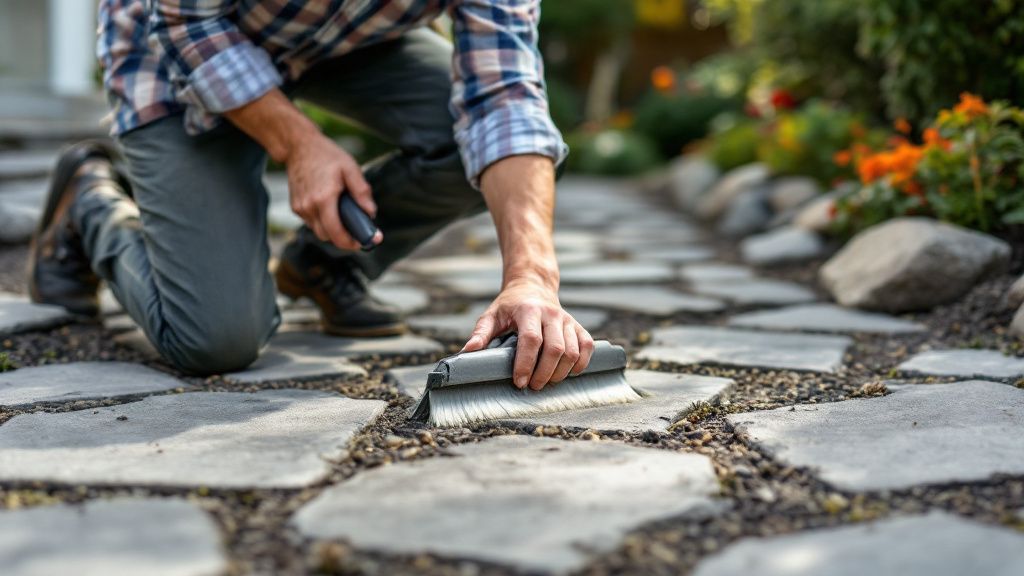
Maintaining and Caring for Hardscapes
Proper maintenance of hardscapes is critical to preserving their appearance and functionality over time. Regular cleaning and sealing of surfaces like paving stones help prevent staining and weather-related damage. Gentle cleaning solutions and power washing can remove dirt and algae, maintaining the visual appeal of your outdoor areas. Routine checks for any erosion or displacement are also essential in ensuring the stability of structures like retaining walls.
For long-term care, seasonal inspections can prevent minor issues from escalating into major repairs. Assessing drainage, especially around retaining structures, helps in identifying potential water damage. In colder climates, applying suitable de-icing products protects against freeze-thaw cycles that can crack stones or bricks. Proper maintenance keeps your hardscape design resilient, prolonging its life and utility.
In the next few years, maintenance practices are likely to see innovations with the integration of smart technology. Automated systems for irrigation and soil monitoring can streamline upkeep, allowing you to manage your outdoor space more efficiently. Hardscaping contractors might increasingly offer services that harness technology, providing more sustainable and effective care solutions. By adapting to these advancements, you ensure your hardscaping installation remains not only practical but also environmentally conscious.